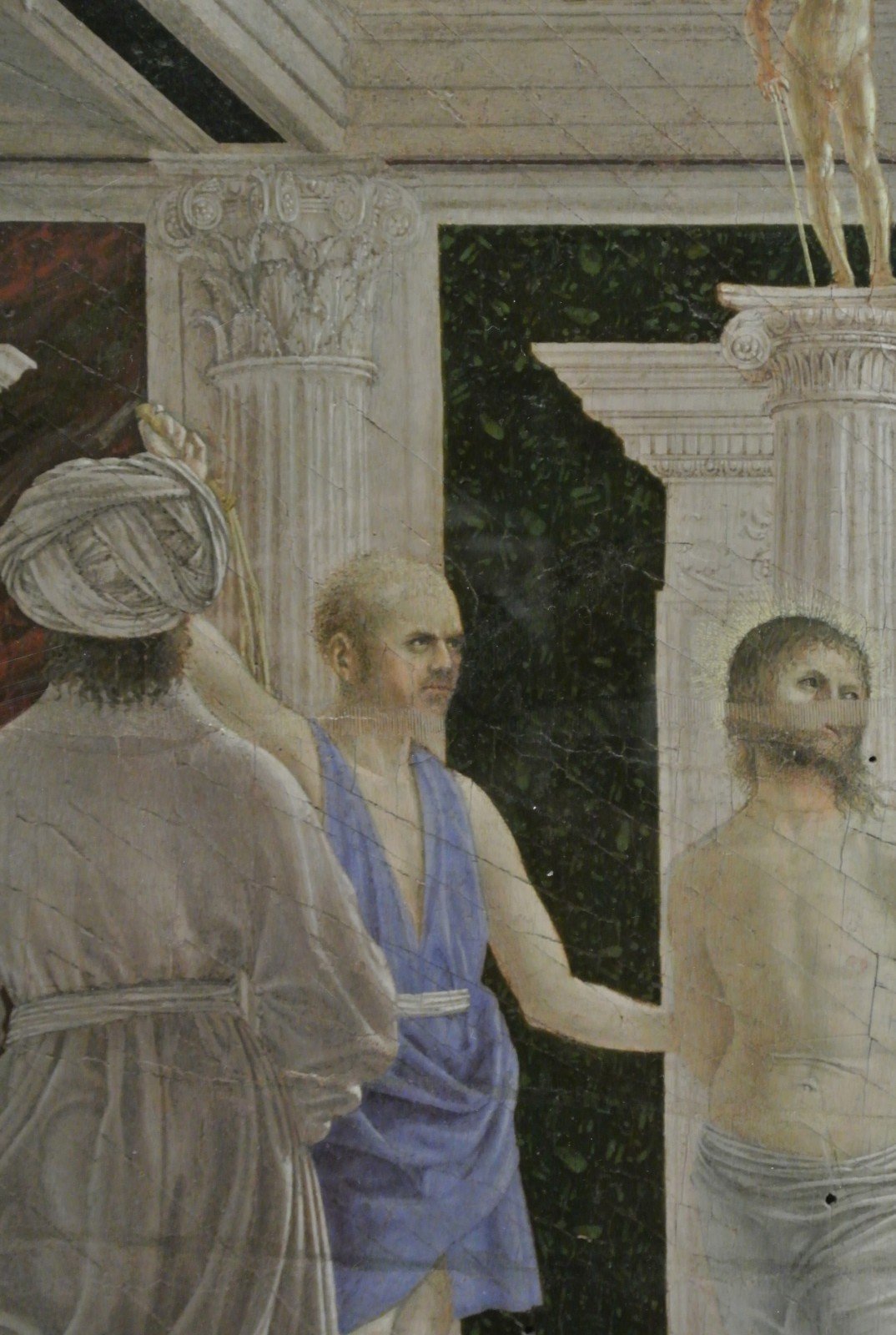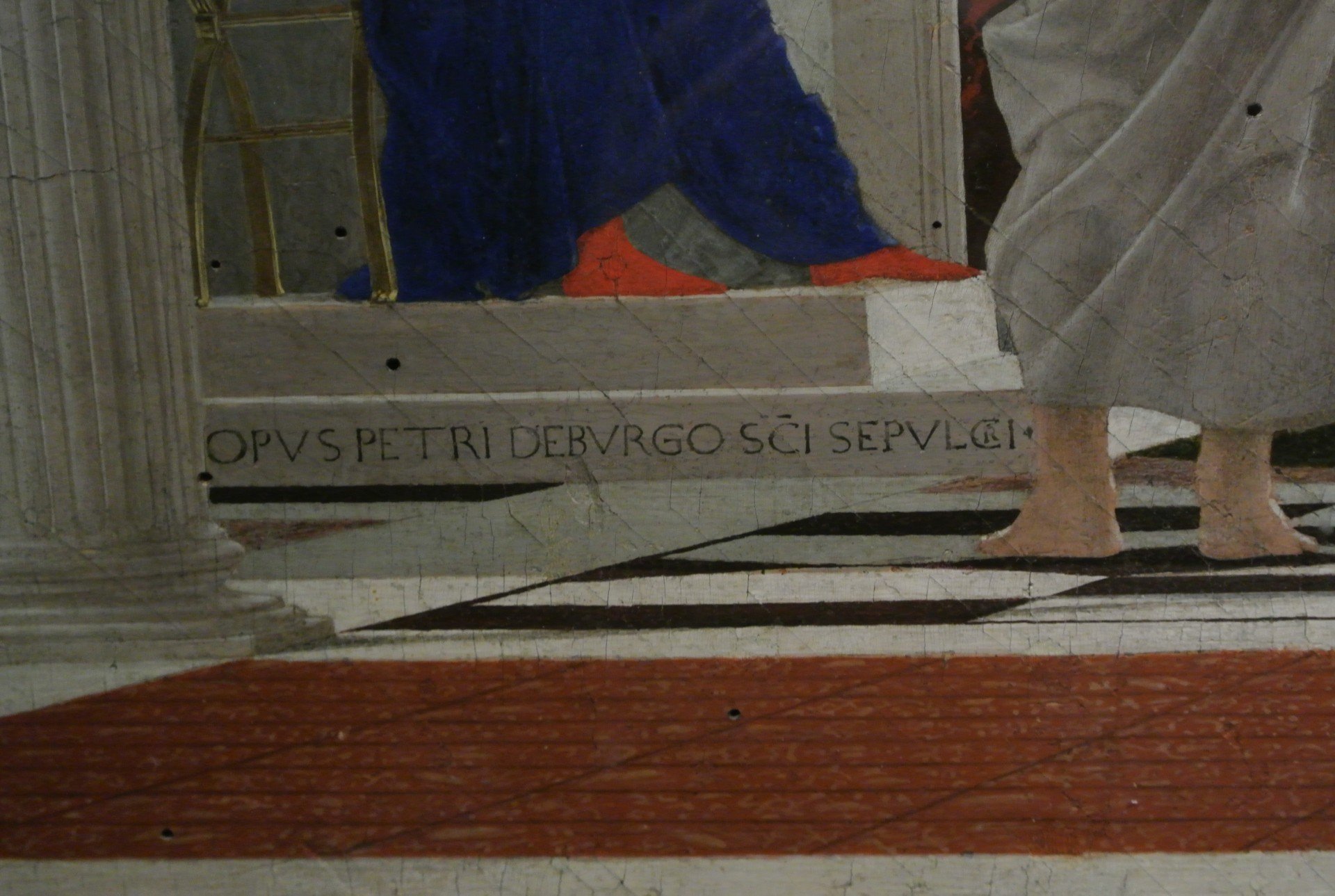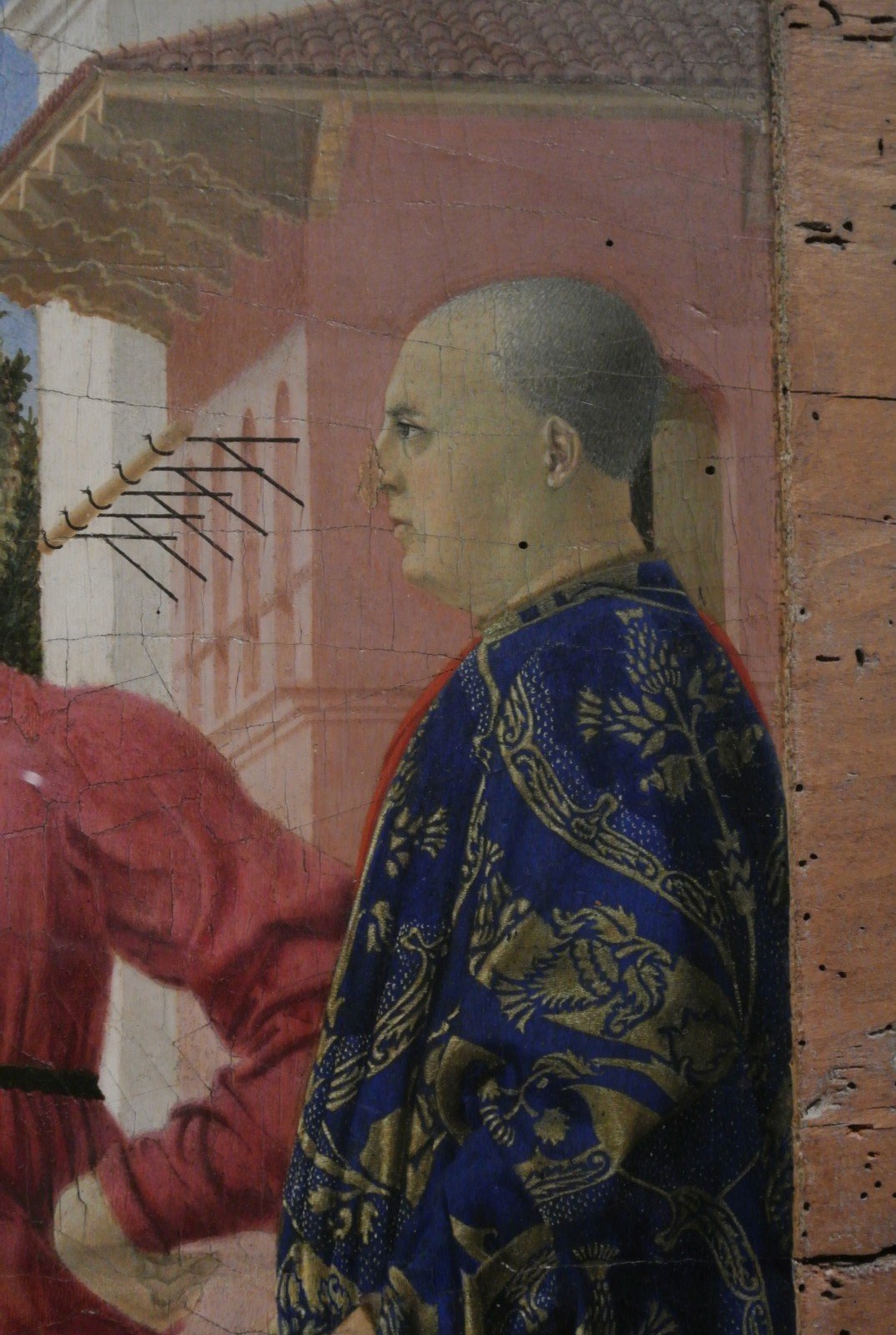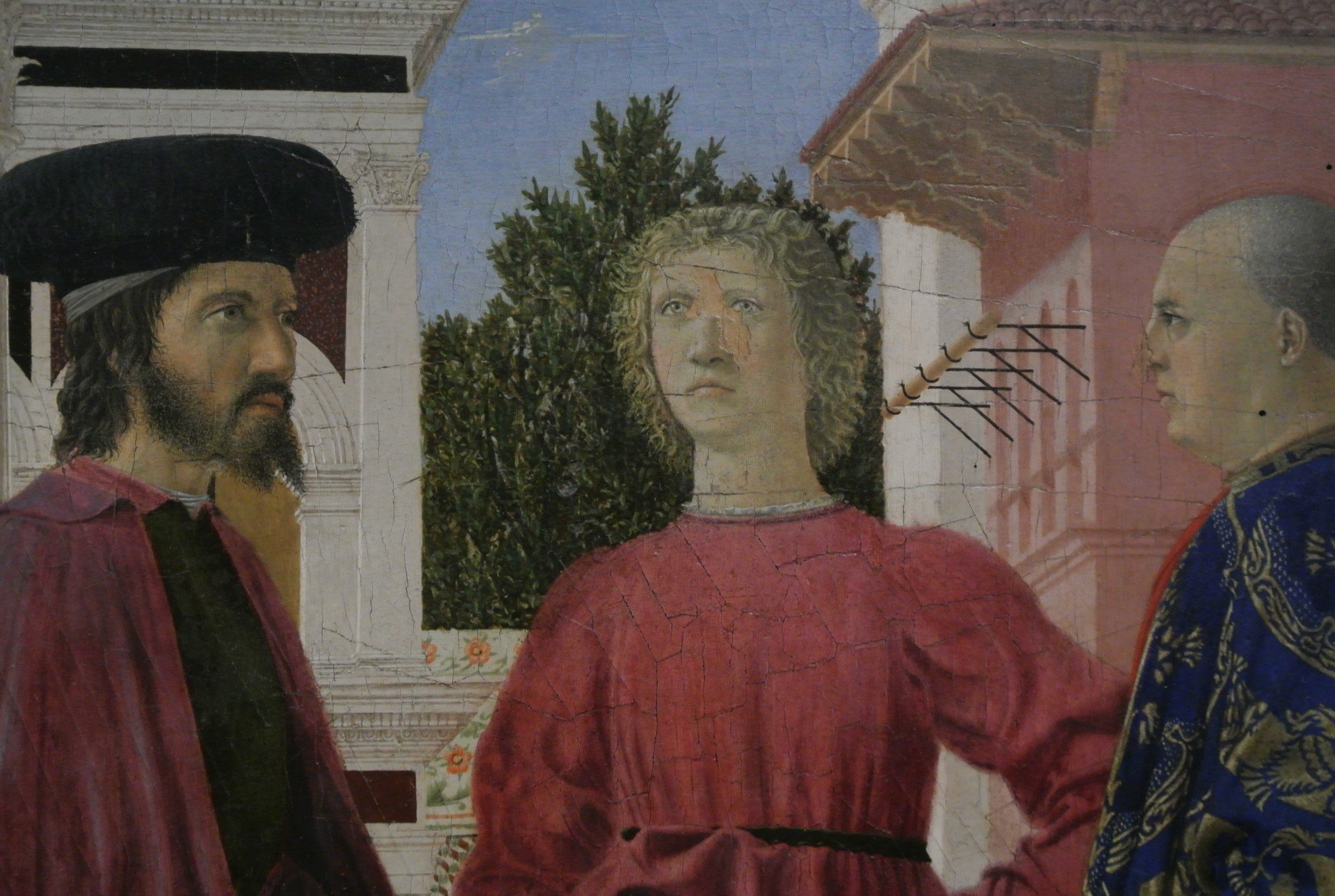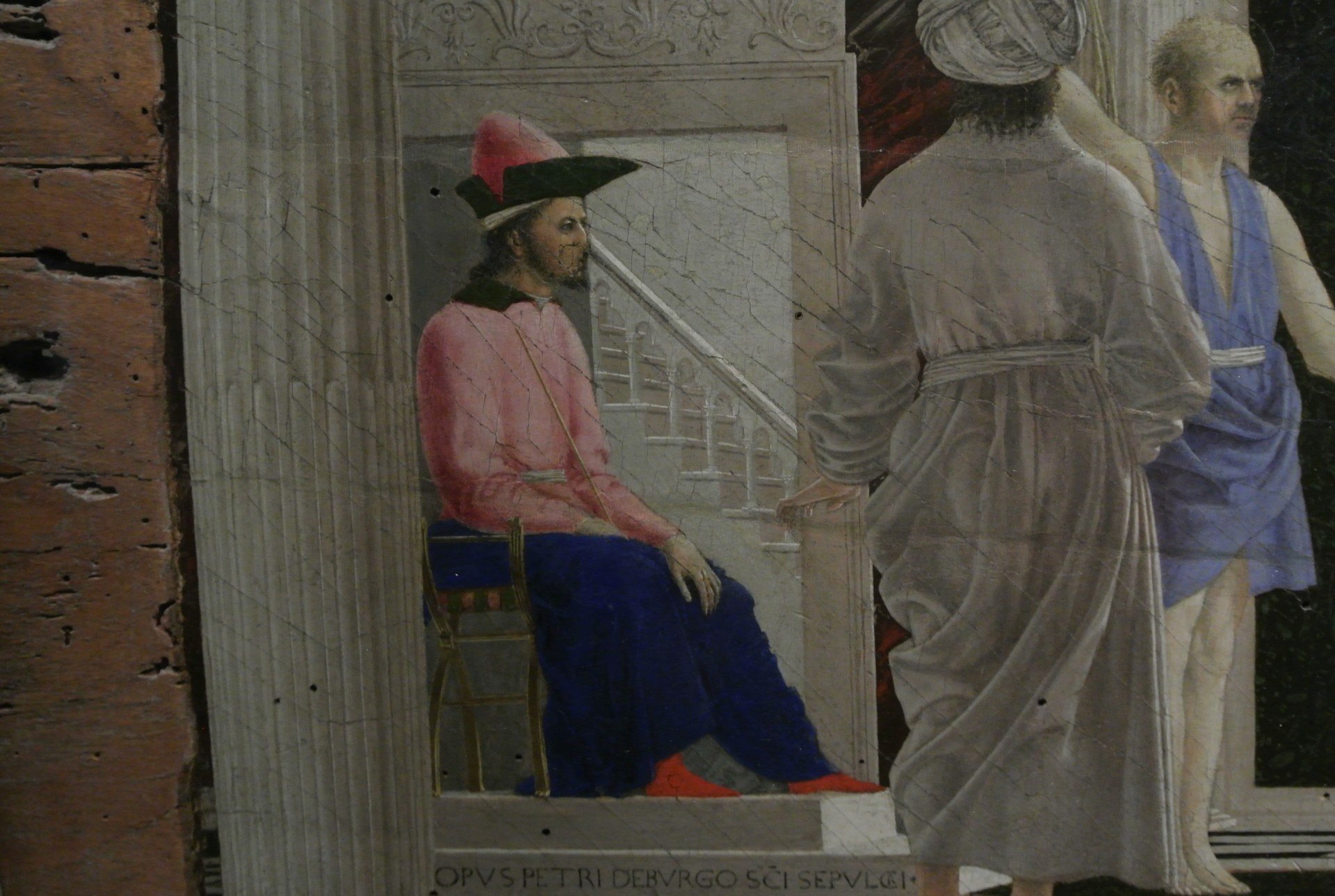Francesco Gennari meets Federico da Montefeltro
For CFA’s ‘at the show with the artist’ section Francesco Gennari gives insights on the art collection of Duke Federico da Montefeltro.
Francesco Gennari was born in 1973 in Le Marche, and since he was a child he has been exposed to the energetic light of the many artistic beauties that this Region of Italy preserves, particularly in Urbino, thanks to the heritage of Duke Federico da Montefeltro. As you will learn from the dialogue that follows, it has influenced his approach to art on level that you wouldn’t expect and that doesn’t concern our predicable physiological response to any of the primitive figurals characterizing Renaissance art. On the contrary, it seems that Francesco Gennari has been able to cross the doors of perception and reach the source of that beauty and its intrinsic human value. Going back to certain periods of the art history may easily become a way to purify your visual mind from disagreeable dross and persistent biases.
What do you remember about the first time you visited Palazzo Ducale in Urbino?
Francesco Gennari: I just remember I was a child, and that’s it. I don’t even remember whom I went with.
Do you also recall the last one? What feelings has it left behind?
Francesco Gennari: The last time I went was just before Christmas 2016, in fact as a grown up I started to go there quite often, both on my own and with other people, to visit some specific exhibitions or simply to wander around the palace and look at its collection.Francesco Gennari: Every time I visit this place I do have the same feeling, and that is the sensation of being within a thinking brain, the palace is expression of unique ethics and aesthetics, the fruits of a golden era of humanity, which may not happen again, but which has thankfully left us some fruits to admire and, above all, to learn from.
When you work, does it happen to think about the art of that specific historical period? If so, in which terms?
Francesco Gennari: I am neither an historian, nor a particularly cultured person, my use of ancient art is substantially entrusted to a sensitivity and insight which I think I own. It is through this irrational channel that I consider the art from that age.
I do often think about it, not by wishing to emulate it, but with a self-confident belief that something I admire has belonged to me since ever, because I was born and grew up with this art.
The matter in effect may come down more to an idea of slow absorption, at times even unaware of what, as Italian, I have always been surrounded by, rather than to a sterile and informed learning.
It happens that the best works of art, today, as in the past, are the perfect blend of representation and metaphor (whose symbol is actually an implementation of it). From Piero della Francecsa’s Flagellation of Christ to your self-portraits. What does the efficacy of this blend depend on?
Francesco Gennari: The point of the matter does not lie in wondering what this blend depends on, but rather it is necessary to question whether the above mentioned blend exists or not.
If there is no metaphor, the artwork becomes an empty representation, at the same time, if the representation is lacking, then the metaphor becomes useless as devoid of its support.
Representation and metaphor ought to coexist in balance, and support each other.
Have you ever “found” yourself in a Renaissance work? If so, which one?
Francesco Gennari: Never specifically, but in general I would say so. I often trace in the Renaissance my idea of measure, the ethics I apply to conceive my works, the harmony of geometry and proportions, the composure and mental order, the not exceeding, the idea of placing the man at the centre of the system, the depth of thoughts as opposed to the seduction of appearance, the constant idea that every artwork is both a part and a tool of a new vision of the world, and much more.
When I put my work “La terra gira le spalle al sole” (The earth turns its back on the sun) in front of Alberti’s Rucellai Sepulchre, the feeling was as my work had been there since ever as it was harmoniously integrated with the presence of Alberti’s masterpiece.
Talking about form, can you think of your artworks in half a millennium? How do you imagine them
Francesco Gennari: My works will always be contemporary. Getting ancient will just be determined by their dating and never by their being, because I don’t ride the cultural wave of an epoch, but the truth of the world surrounding me, the night, the sunset, the stars, my identity, the sensitivity of the human being, the death.
I deeply feel that idea of the total artist which prevailed during the Renaissance and which the developments in science and technique have erased.
I created a big workshop of specialised artists that only Italy can offer, of every place, from Murano glass to Faenza ceramics and many others. I avail myself of those craftsmen that years and years of experience have made extraordinary, they realised the works, my role is that of creating, of having that primary intuition by always keeping in mind a general sight on my whole work, and lastly of obsessively checking that at the end of the productive process my work is identical to what I had imagined.
I’m rather indifferent to social issues, ideologies, relativism and I am focused only on what has always pertained, and will always do, the human being living on this earth.
I think of my work “Autoritratto come moto di rotazione della terra (con loden e scarpe clark’s)” (Self portrait like the earth’s rotation motion (with loden and Clarks shoes)), whose length is equal to the perimeter of my body, then I acknowledge that already Leonardo had thought of the human body’s measurements in his “Vitruvian Man”, I think of the architectural order of the “ideal city” and then of the architectures of my “mausoleum”.
Even since before Renaissance nothing has really changed at the basis of art, and it is indeed on this objective base that my research rests, therefore I have always regarded myself and my works as timeless.
Modernity is not a chronological concept.
If one was willing to access your artistic practice through the past history of art, what is the path you would suggest?
Francesco Gennari: My pronounced Italianness is at the basis of my work and it strongly defines me, my artworks are a typical product of an Italian-Mediterranean sensitivity and this embodies a great value for me, I’ve already described my relationship with Renaissance but I also want to highlight the great importance that I attach to Dechirichian metaphysics.
If I have to leave the national borders and move closer in time to today, I will address my interest towards American minimalism which in its visionary willingness to affirm a new vision of the world does somehow remind of what had happened in Italy during the Renaissance.
I’ve never forgotten where I was born and I grew up, and today as before, having some strong and deep roots make the architecture of your own work more stable and unique.
April 4, 2020


